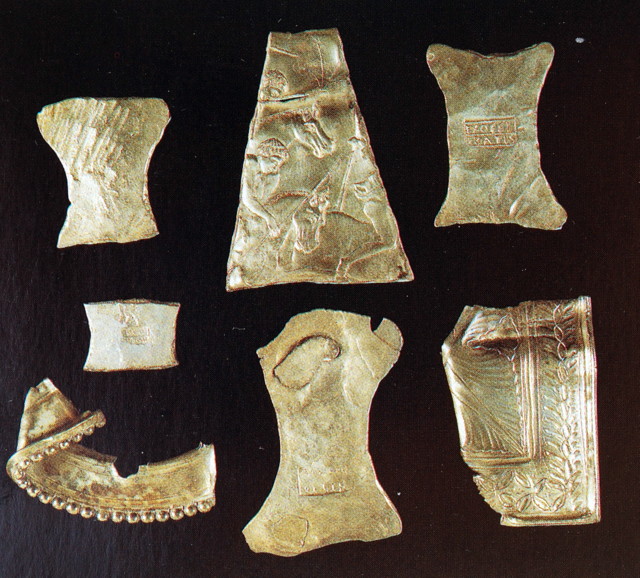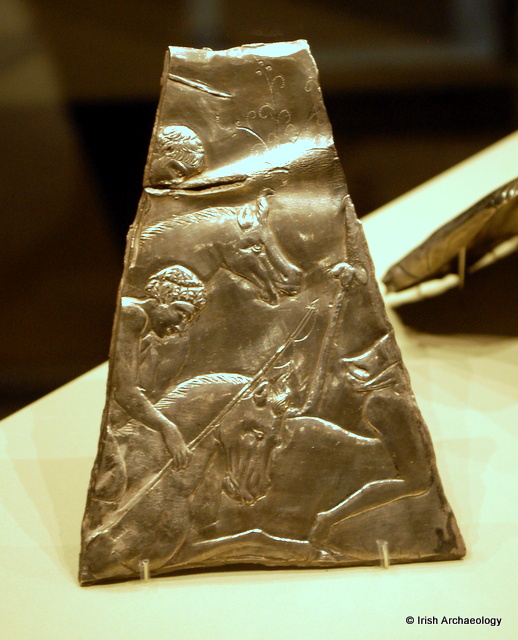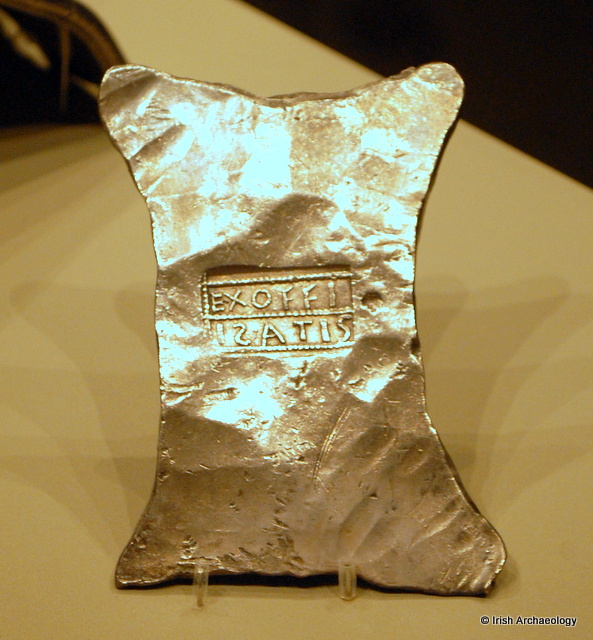
This hoard of Roman hack silver and ingots was discovered in a gravel pit at Balline, Co. Limerick in 1940. Dating from the 4th century AD, its origins lie in southern Britain and it may represent loot captured during Irish raids on the then declining Roman colony.

The hoard consists of two hide-shaped ingots and parts of two others, as well as three pieces of hacked silver plate. Official Roman seals are present on three of the ingots and these bear the inscriptions ‘Ex offi Isatis, Ex ofc Vilis and Ex o non‘. Identical ingots and stamps are know from Kent in southern England and this may be where the pieces originated from. The three fragments of hack silver are derived from large Roman platters and are decorated in a variety of classical scenes and motifs.

How the Balline hoard arrived in Limerick remains uncertain, although, as already mentioned, it may represent captured booty. Conversely, it is also possible that the pieces were given in payment to Irish mercenaries who were fighting on behalf of the Roman army.
Today the hoard can viewed at the National Museum of Ireland, Kildare, Street, Dublin.
References
Raftery, B. 1997 Pagan Celtic Ireland. The Enigma of the Irish Iron Age, Thames and Hudson Ltd., London, pp. 215-16
Wallace, P. F. 2000 A Guide to the National Museum of Ireland, Town House and Country House, Dublin, p. 33
.



Awesome piece! You may also want to check Cahill Wilson (ed.) 2014 “Late Iron Age and Roman Ireland”, chapter 2,esp.p39-43 for more about the possibility of this hoard being donatives or payments to Irish troops/mercenaries having served in the imperial army. Such hoards of hacksilber are also found in Scotland (cf. Hunter’s work on the Traprain Law one) and in Barbaricum, they’re quite fascinating!
Hi Alex, thanks for the compliment and the extra info 🙂 I checked the book alright, but as this was a pretty short blog post I thought I’d just mention the two main theories about the hoards origins in passing. The payment of Irish foederatti definitely has its merits though 🙂
Another possibility is wages for shepherding work, supposed to be common enough in 4thC Roman Britain. Maybe these were the workers who brought back sheep tallying marks and made ogam inscriptions from them?